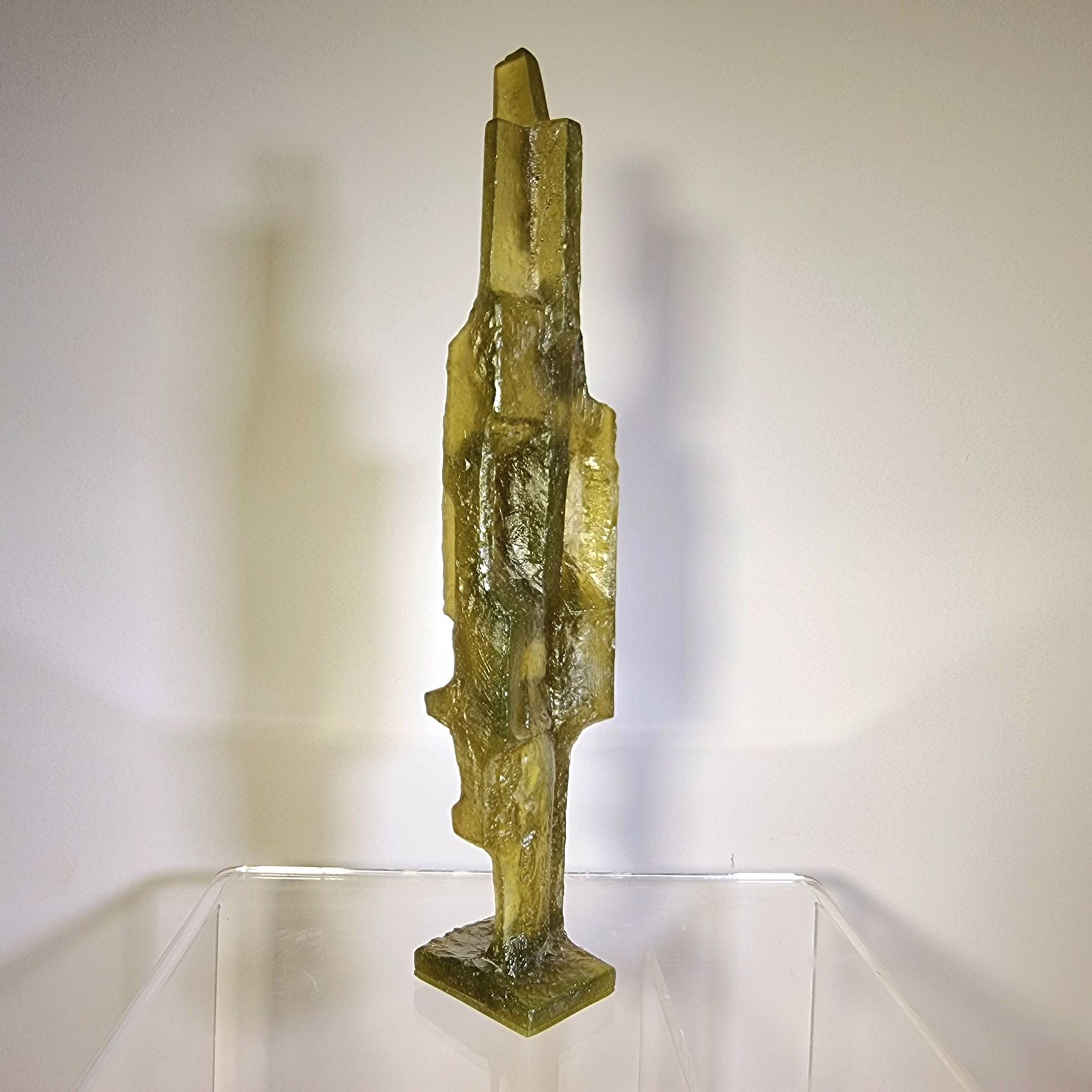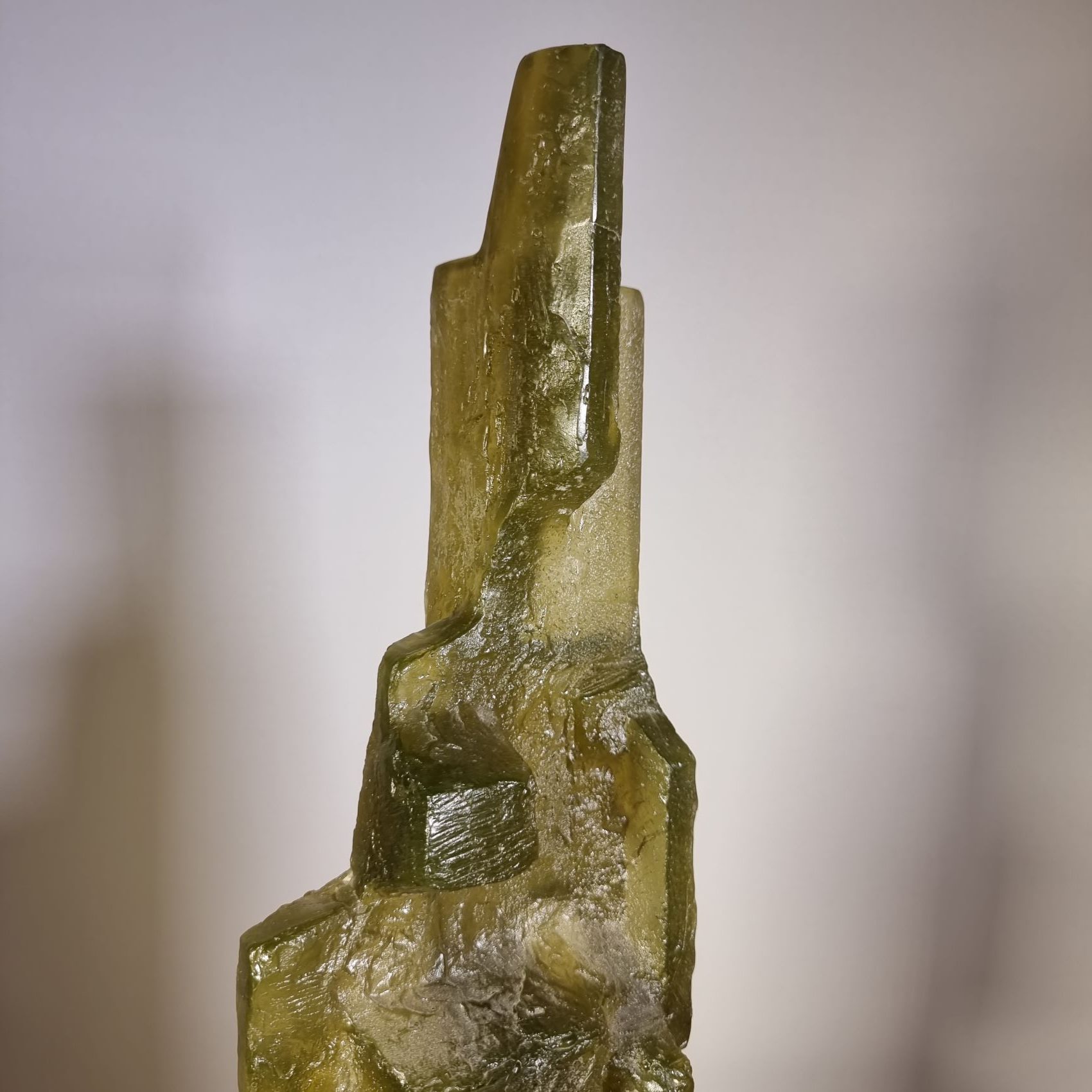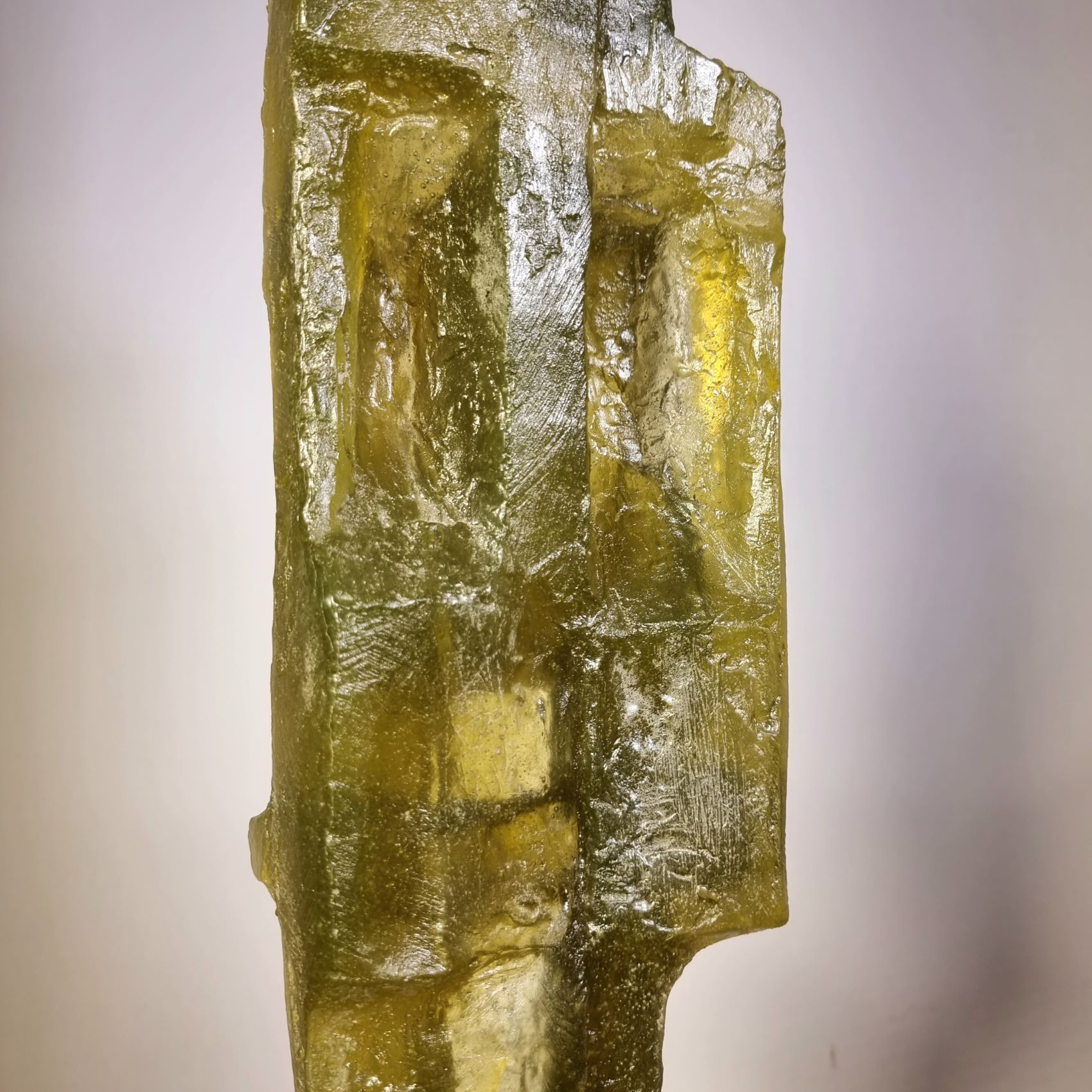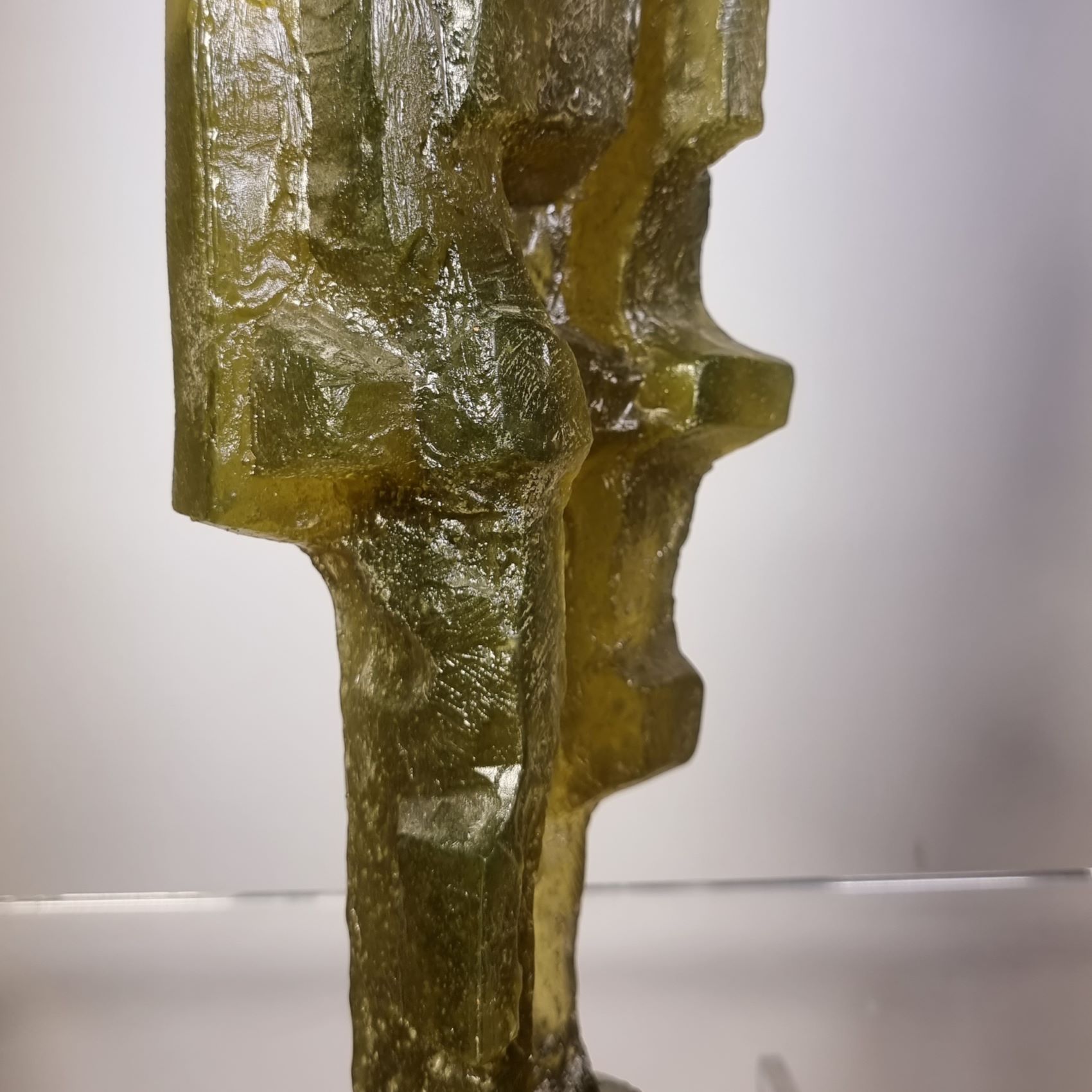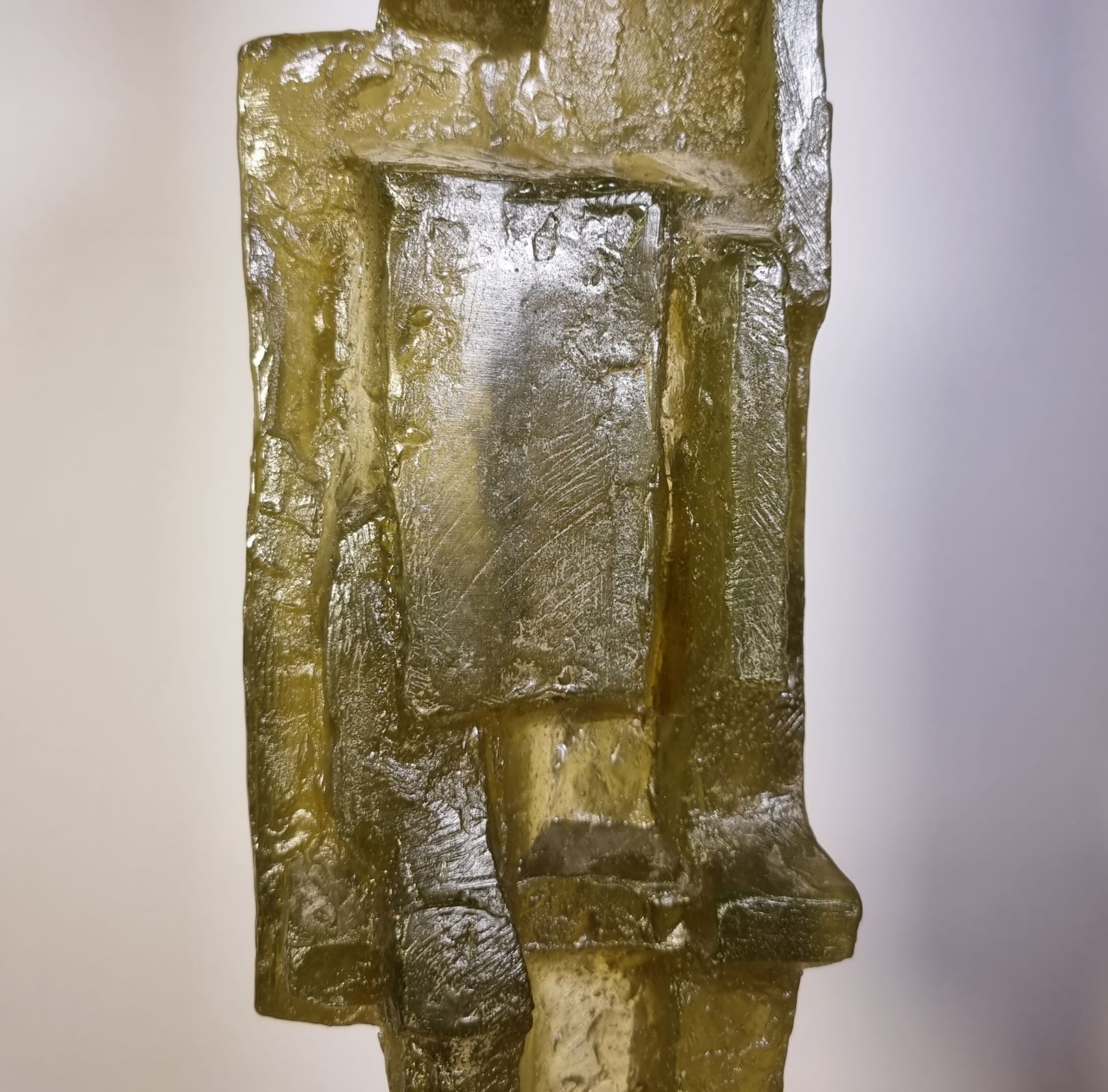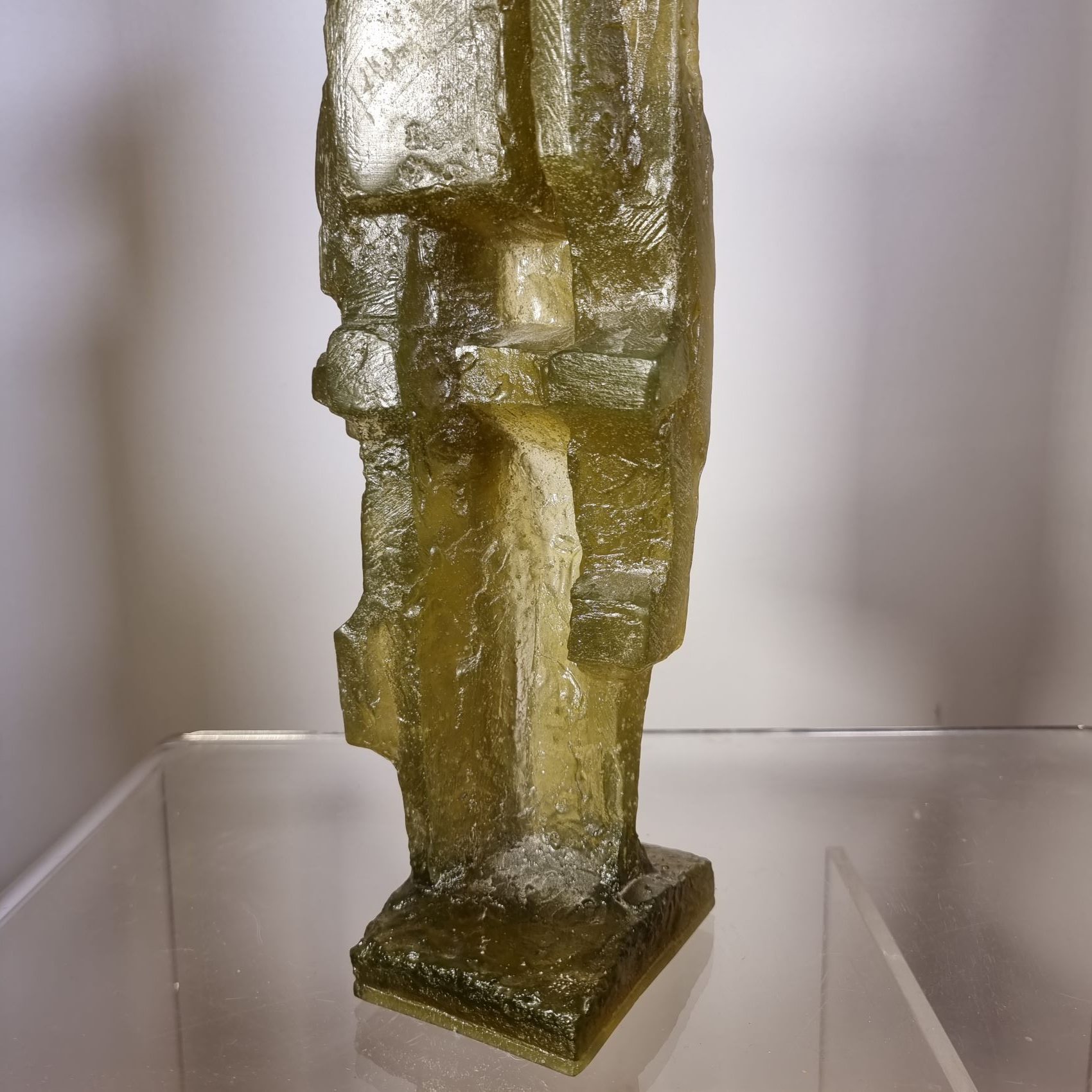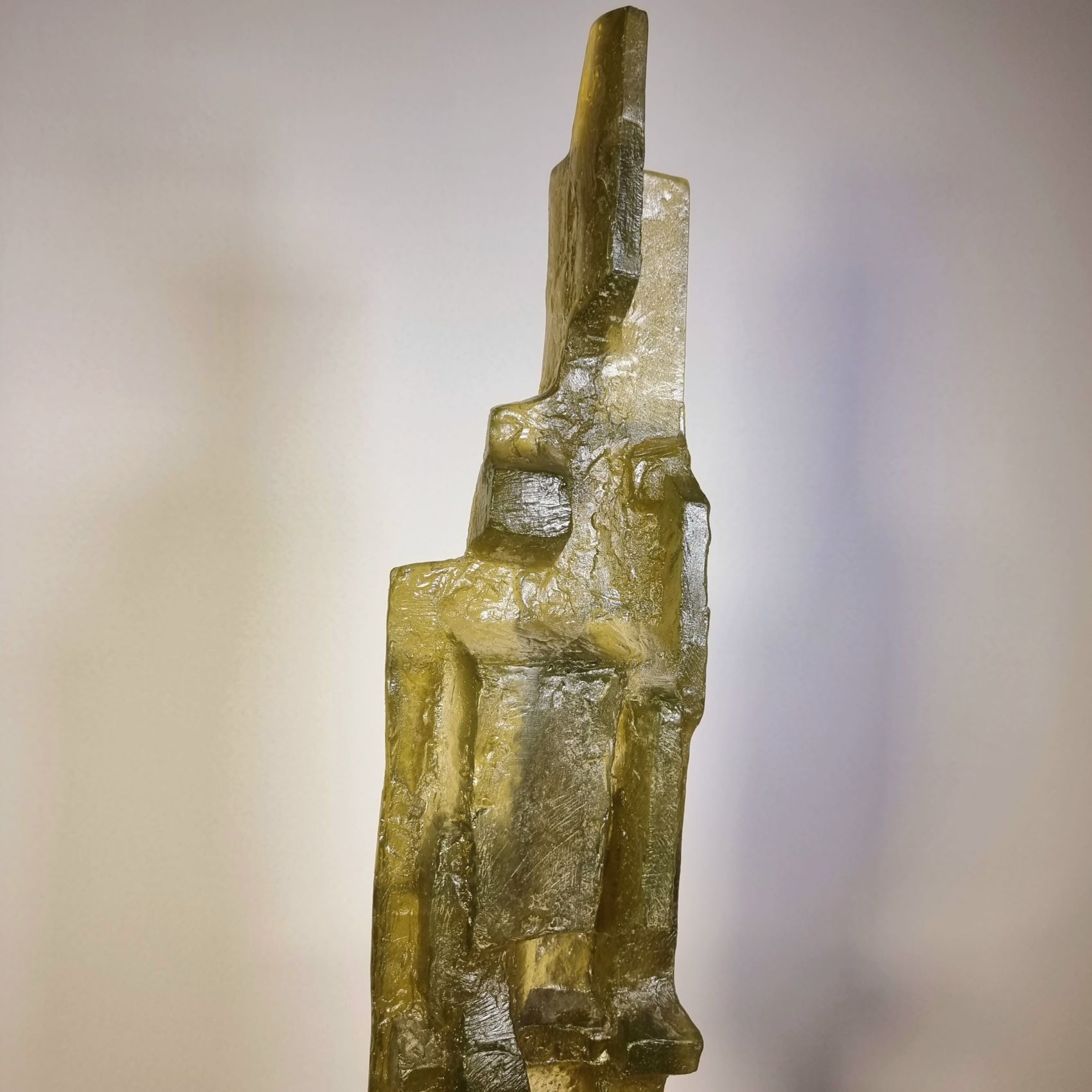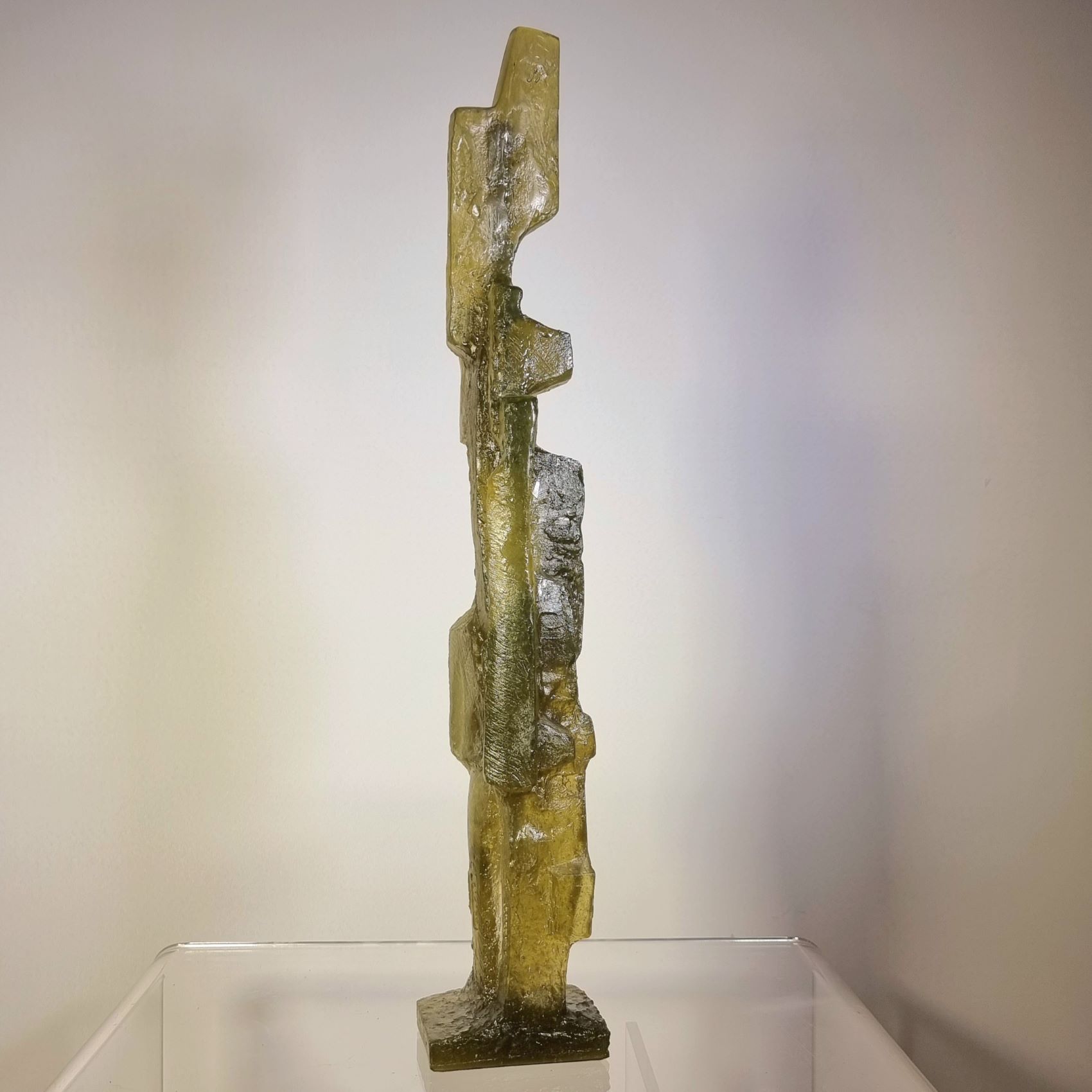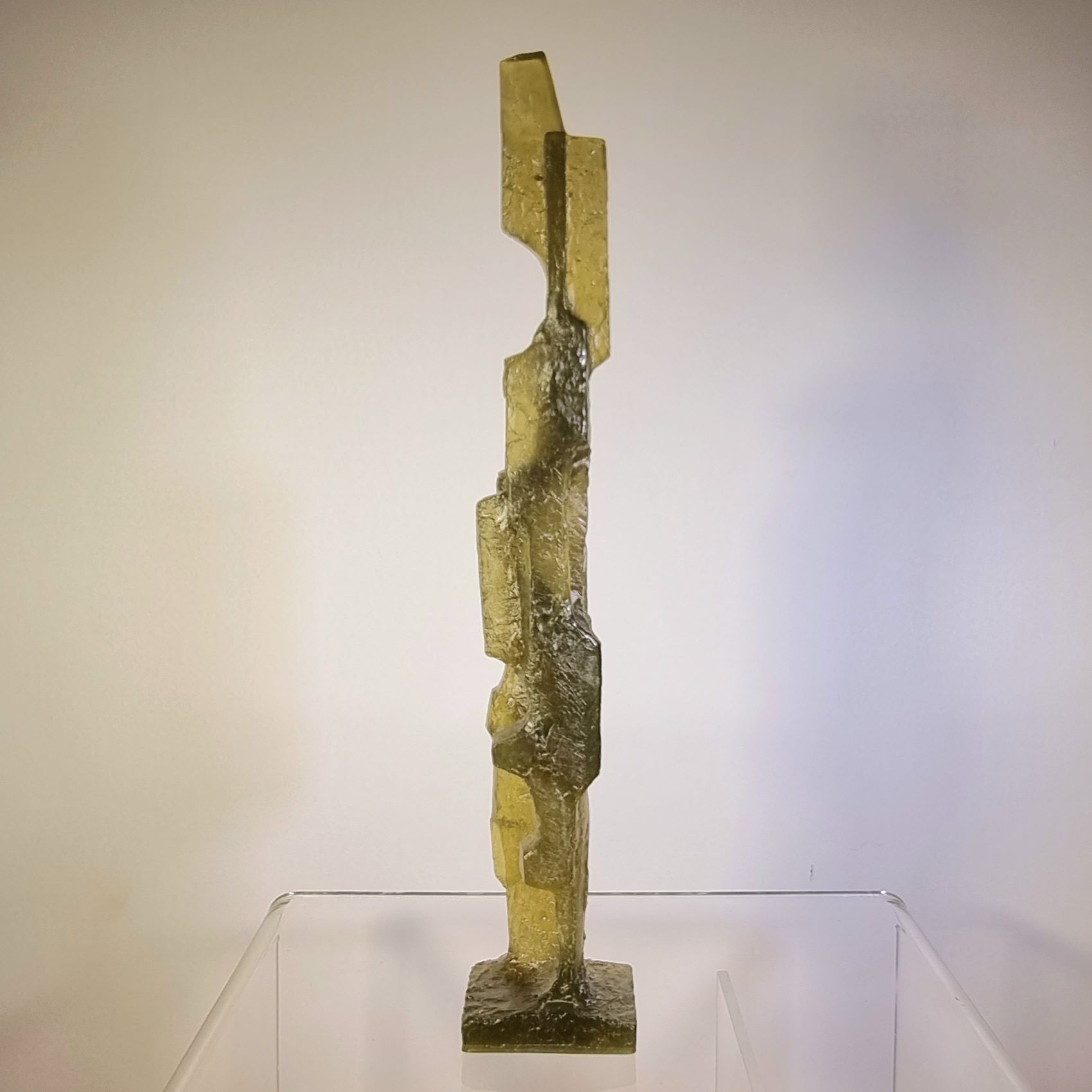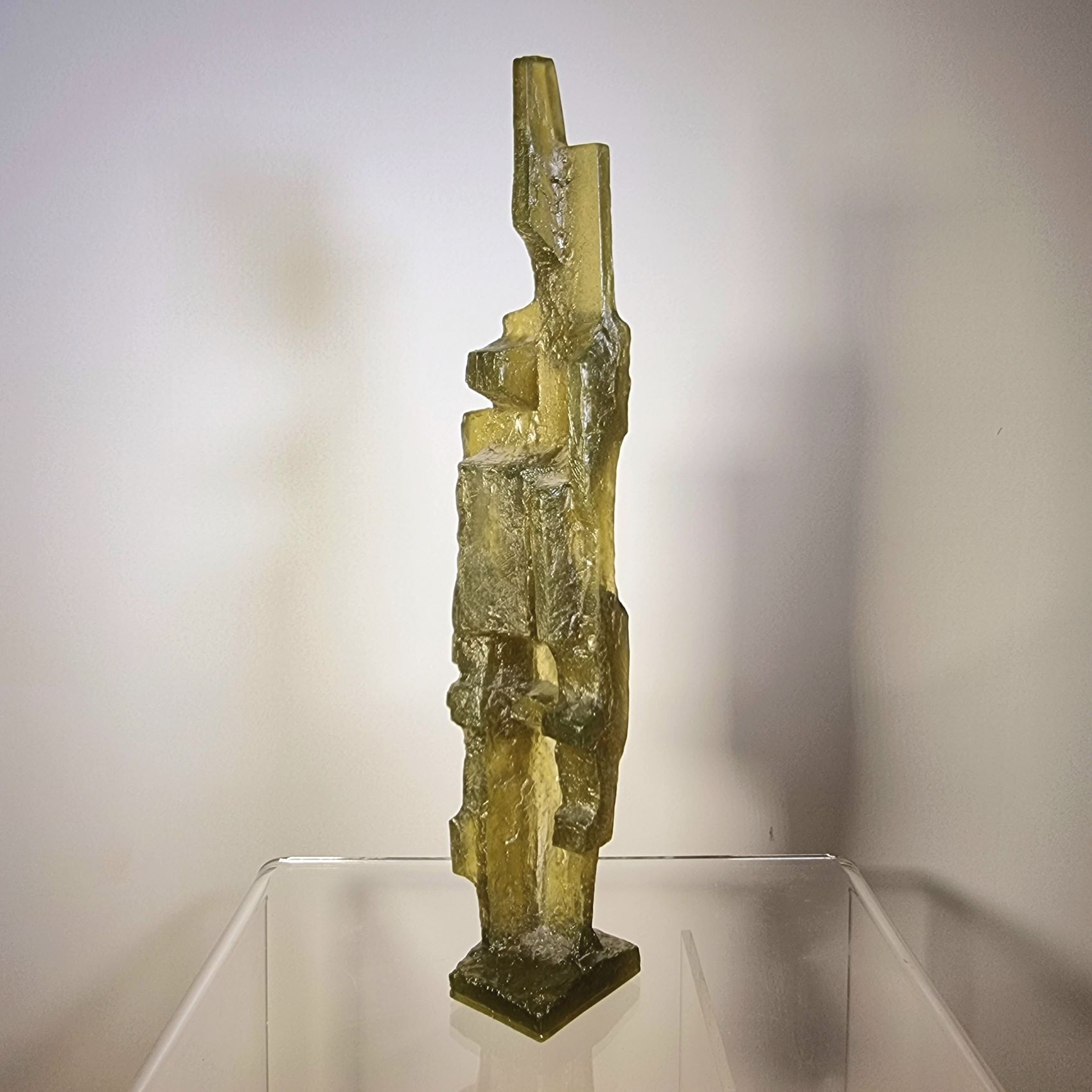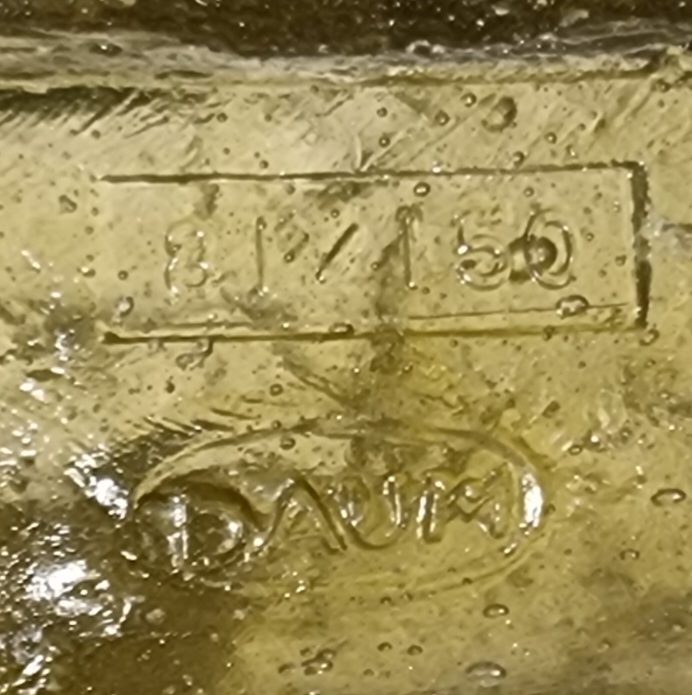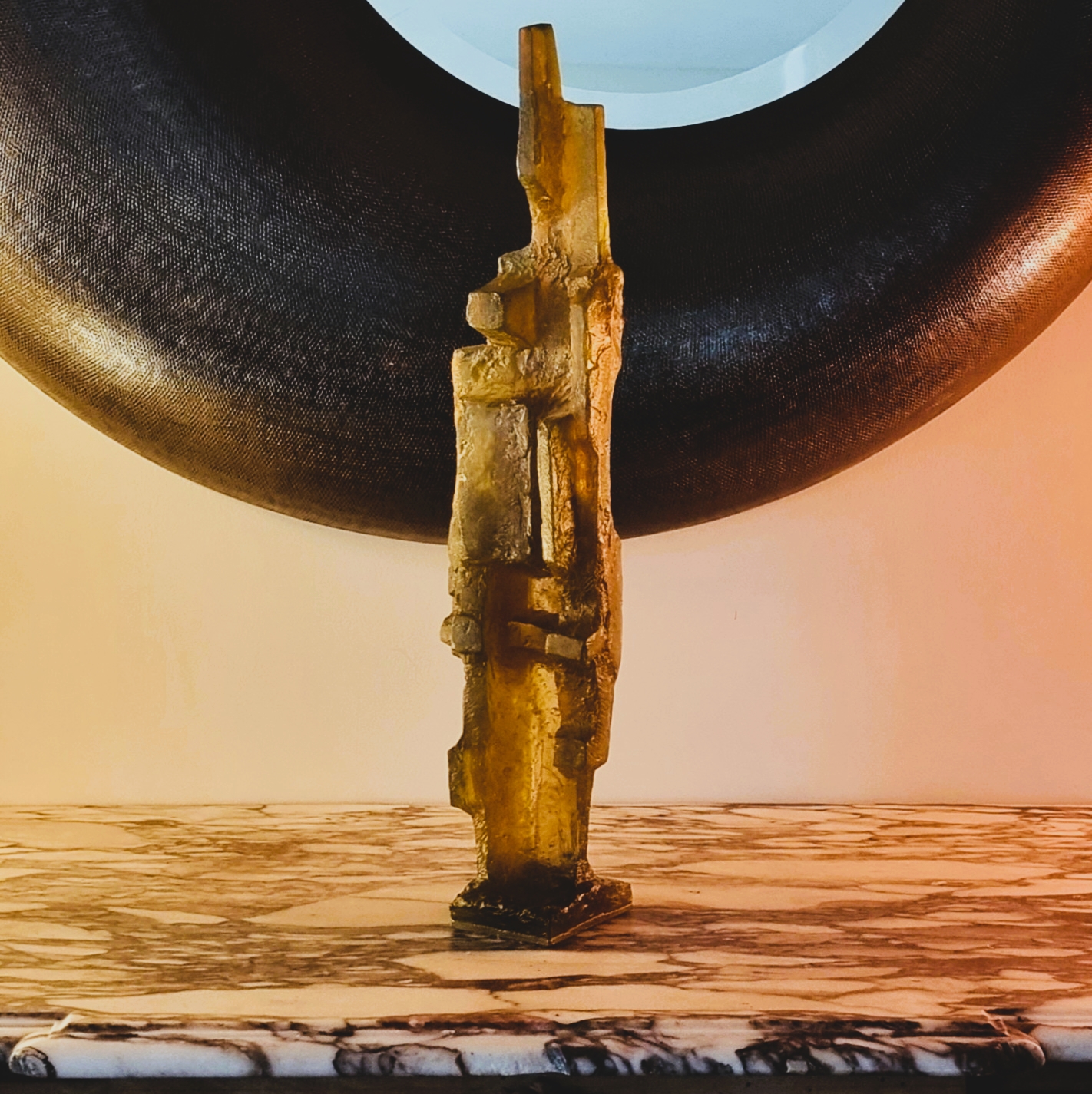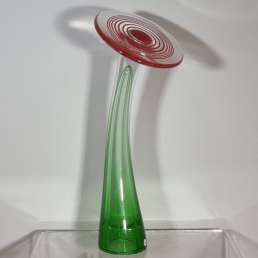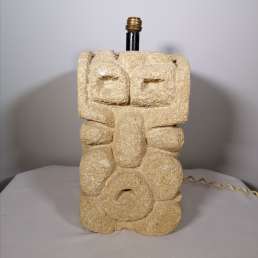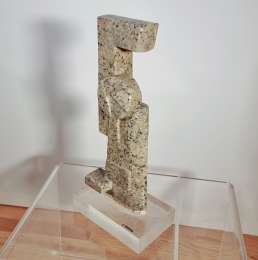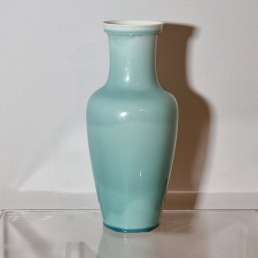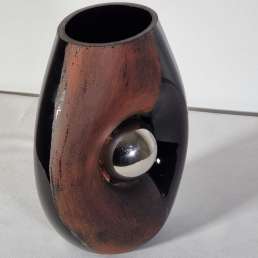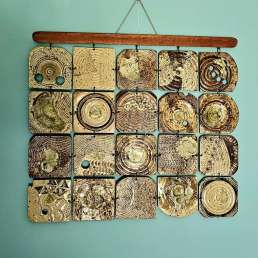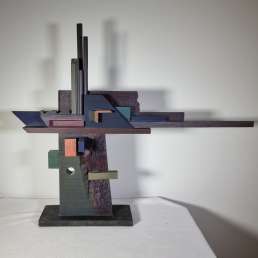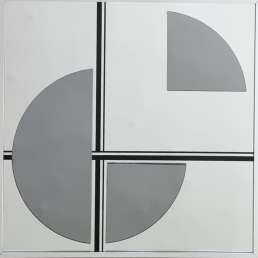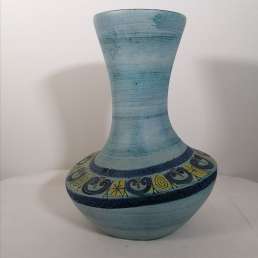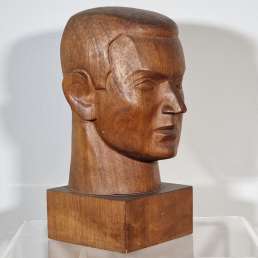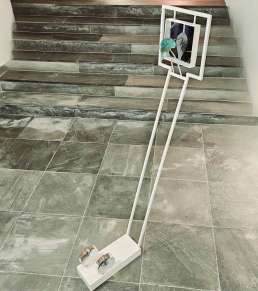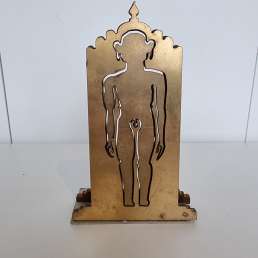M. LEGENDRE for DAUM, “The Warrior”, crystal paste, circa 1970
Description
What I like
I like Maurice Legendre’s The Warrior first of all because it is a sculpture of light: taking up the multiplication and division of plans inherited from cubism, this sculpture captures and returns light thanks to its original material for a sculpture, the crystal paste. The peridot color of this rare material vibrates, the color is material. I like the fact that this Warrior is fragile, contrary to his definition: there is nothing mortal about him: it is the fragility of man that matters. I like the technique of molten glass/crystal, improved by the Daum house, and the policy of this great house known for its crystal to call on great sculptors to create unique works: we think of the Expansions of Caesar, the Venus Salvador Dali’s drawers, and so many others.
I love the history of this material, known and very well mastered in Antiquity. Rediscovered by Art Nouveau artists such as Henry Cros (the first to find his secret), Amalric Walter, Gabriel Argy Rousseau, François Décorchemont. Since 1968, the Daum crystal factory, with its creation workshop and the support of numerous artists, has given pride of place to the glass paste which had fallen into oblivion after the First World War. It adds lead to it, then giving rise to the crystal paste. The glass paste has a particular grain, it reveals an object with a more or less ceramic appearance. The mold of the part to be produced is made of refractory material using various techniques, including that of lost wax. After firing, according to heating levels intended to avoid cracks, the mold is cooled and filled with powder or glass granules variously colored according to the desired decoration: a new firing takes place and, after cooling, the mold is delicately destroyed. Each released room is unique. This results in unique color variations and high detail accuracy. In 1968, the Daum crystal factory, with its creation workshop and the support of numerous artists, brought this technique back into the limelight, which had fallen into oblivion. It adds lead to it, then giving rise to the crystal paste. This sculpture by Maurice Legendre, dating from 1969 is part of the first generation of the revival of glass paste, magnified in crystal paste.
I also like the fact that it is a large format, which is a technical feat for a glass or crystal paste.
Technical description
Maurice LEGENDRE (born in 1928) for DAUM
The warrior,
Circa 1970
Sculpture in peridot crystal paste, signed numbered 81/150 and stamped Daum in the mass.
Dimensions and weight
High.: 58 cm- Width.: 13 cm- Depth.: 10 cm
Weight: 4.5 kg
Mix & Match
This statue is an autonomous work of art, bringing the light of crystal paste into every interior. Heir to post-cubist precepts, it goes very well with Art Deco furniture. But I like to accompany it with the pair of black Kroken armchairs with brown leather, whose controlled austerity will be awakened by the peridot of the crystal paste. This sculpture is magnificent when it brightens up the walnut and chrome desk of the Banque de France, whose wide top can accommodate one or two chosen art objects. In the same way, it can be placed on the white table of the Orsay salon by Gae Aulenti from the end of the 1970s: the rigor of the curves of this salon will welcome this statue, united by the same passion for the quality of the materials.
I also placed it on a Louis XV chest of drawers: a true work of art, it sparkled on this piece of furniture, a priori so different from its universe: but such is the merit of works of art: they transcend eras.
In stock
Description
To know more
The designer
A pupil of Robert Couturier, friend and fellow student of Jean-Pierre Demarchi at the École Nationale Supérieure des Arts Décoratifs, the sculptor Maurice Legendre was one of Daum’s first collaborators, with four pieces published in 1968. From 1968 to 1981, he will design eleven models of glass paste of varied inspiration and spirit, including several particularly expressive animal statuettes, “Cheval”, “Grand Duc”, “Hulotte”, “Sacre”. Among the works which were inspired to him by the human figure and which are generally of classical style, the “Warrior” holds a special place.
Its monolithic silhouette, its simplified plans, its severe straight lines, its geometric volumes reflect a formal research inherited from post-cubism, that of Lipchitz or Zadkine especially. The austerity of the masses is offset by the sensitivity of the modeling which catches the light, illuminating the peridot tones of the glass. A later project of “Warrior III”, developed in 1970, did not materialize.
L’éditeur
Daum is a crystal factory founded in 1878 in Nancy, Lorraine, France, by Jean Daum. The development of Daum took place around 1890-1900 with the Art Nouveau style and the School of Nancy (see Gallé…). The creations of this period populate museums, as much in France as in Japan, in the United States and in Japan in particular. The Daum workshops formed some of the great names of Art Nouveau: Jacques Gruber, Amalric Walter, the Schneider brothers… Masterpieces were also created during the Art Deco period, also in major museums. After the Second World War and the many shortages of pigments used to make glass paste, crystal takes a prominent place, under the direction of Henri and Michel Daum. A grandson of the founders developed the production of a particularly transparent and brilliant crystal. This new crystal promotes the production of pieces with thick and flexible shapes, with a luminous appearance. Since 1968, the Daum crystal factory, with its creation workshop and the support of numerous artists, has given pride of place to the glass paste which had fallen into oblivion after the First World War. It adds lead to it, then giving rise to the crystal paste. The glass paste has a particular grain, it reveals an object with a more or less ceramic appearance. The mold of the part to be produced is made of refractory material using various techniques, including that of lost wax. After firing, according to heating levels intended to avoid cracks, the mold is cooled and filled with powder or glass granules variously colored according to the desired decoration: a new firing takes place and, after cooling, the mold is delicately destroyed. Each released room is unique. This results in unique color variations and high detail accuracy. In 1968, the Daum crystal factory, with its creation workshop and the support of numerous artists, brought this technique back into the limelight, which had fallen into oblivion.
A nice authentic object at a fair price
This sculpture has been carefully selected for its aesthetic qualities, its originality and its fair price. Our choice favors, above all, the sharpness of the design, a guarantee of enhancing your new acquisition in your interior and an ability to interact with your furniture, to match and mix to create a unique decoration.
Buying a work of art is an investment, this time guaranteed by the reputation of the publisher, the house of Daum.
Buying a vintage piece preserves the resources of our planet earth.
Additional information
| Weight | 4,5 kg |
|---|---|
| Dimensions | 10 × 13 × 58 cm |
| Créateur | |
| Editeur | |
| Matières | |
| Epoque |



